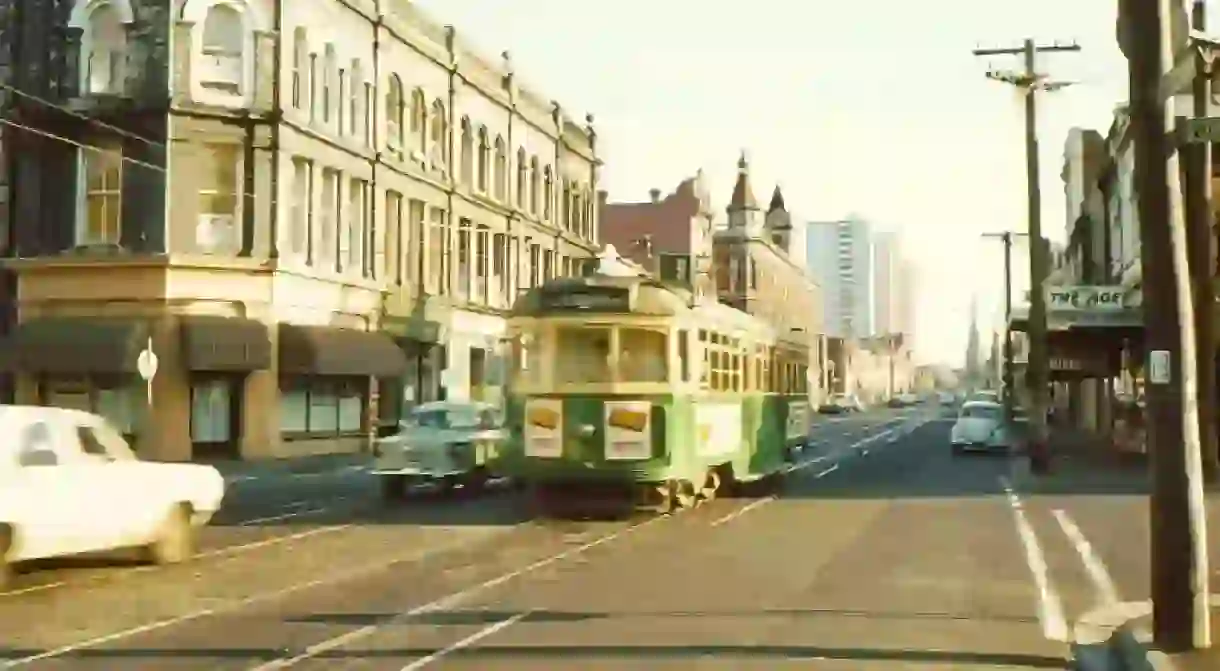A Retrospective Look At Melbourne Through The Decades

Here we take a look back through Melbourne’s history with a visual guide depicting just how much our city has evolved since the late 19th century. See some of the earliest images of the MCG and vintage photos of the Melbourne Cup and Flinders Street Station, as well as black and white photos of Collins Street and Fitzroy.
Pre-1900s
Founded in 1838, the Melbourne Cricket Ground started as a government paddock and has since become the largest sporting stadium in the southern hemisphere.

Located on Eastern Hill, St Patrick’s Cathedral is a Melbourne icon that has been visited by Pope John Paul II; however, in the early days of the cathedral’s history, construction was slow due in part to the depression that hit Melbourne in 1891.

1900s
Since 1861 the Melbourne Cup, the race that stops the nation, has captivated audiences. Bets are placed and we hold our breath as the best thoroughbreds race across a two-mile course. The fashions on the field may have changed over the years, but the race is more popular than ever before.

Since 1854, Melburnians have flocked to Flinders Street Station, and today approximately 105,000 pass through the terminal each day. The landmark has undergone a few changes though, and is virtually unrecognizable in comparison to how it looked in its early days.

1910s
The City Baths were opened in January 1860 as an initiative to stop the public from bathing in the Yarra River. They are still open to swimmers today, and were recently used in the 2016 White Night event.

1920s
After the first electric train ran between Flinders Street and Essendon in 1919, Flinders Street Station quickly became the busiest in the world.

1930s
The image below depicts Collins Street in the 1930s, which was just as popular a shopping destination then as it is now. ‘Doing the block’ was a pastime for shoppers meandering through Block Arcade.

The Shrine of Remembrance was dedicated on November 11th, 1934 by the Duke of Gloucester with a crowd of over 300,000 in attendance.

1940s
Melbourne Zoo opened in 1862 and is Australia’s oldest zoo. Today, it is home to more than 320 species from Australia and beyond. During the 1940s, Melbourne Zoo was home to elephants Peggy, Betty and Queenie, which visitors could ride for a tuppence.

1950s
In 1954, Queen Elizabeth II became the first reigning monarch of Australia to visit the country; to commemorate her visit, Flinders Street Station was illuminated in dazzling lights.

1960s
A W5 Class Tram en route to Toorak in 1969, displaying a Hospitals Contribution Fund (HCF) ad prior to their closure in the 1970s.

1970s
In the 1970s Melbourne was the only Australian city with a major tram network and W-Class trams replaced Z-Class trams. The image below shows a tram headed through Fitzroy in 1979.














